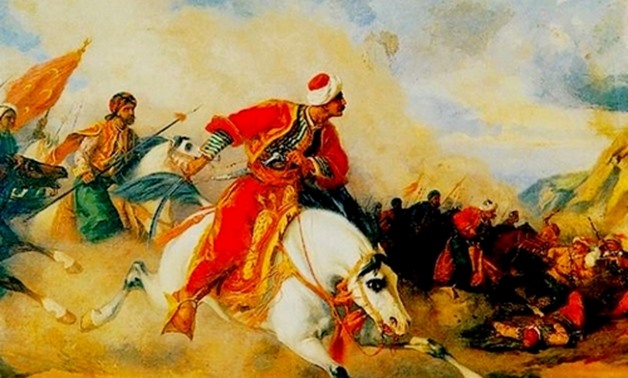
A depiction of Selim I - Creative Commons via Wikimedia Commons/Bassem18
CAIRO – 13 February 2018: After many decades after the end of the Ottoman occupation, Cairo has omitted the name of Sultan Selim I from a Cairo street as a way to get rid of "unacceptable" names and distinguish between people who treasured Egypt and others who invaded and violated the country.
The story began when Mohamed Sabry al-Daly, professor of contemporary history at Helwan University, submitted an official request to Cairo governorate to change the name of Sultan Selim I Street in Zaytoun district of eastern Cairo.
Egypt is a country with a multicultural society that has respected and received people from all countries throughout the world. Therefore, many Egyptian streets are named after foreign characters.
With the 500th anniversary of Sultan Selim’s invasion of Cairo and the end of the Mamluk era in the country, the Egyptian government has recently recognized that Sultan Selim I was not a patriotic symbol, but rather an invader who came to control Egypt and capitalize its resources.
The street was named after Selim I in the second half of the 19th century, under the reign of Mohamed Ali.
Sultan Selim I was born on October 10, 1470, in Amasya, Turkey. He was the youngest son of Sultan Bayezid II.
He provoked a dispute between Sultan Bayezid and his brother, Ahmed. By 1512, he declared himself sultan when he orchestrated a coup against his father and killed his brothers and nephews in order to eliminate his rivals for the throne.
The Turkish people named him “Selim the Resolute” because of his courage in the battlefield. However, other people named him “Selim the Grim” due to his face always being sullen.
The era of Sultan Selim I was distinguished from previous eras, as his conquest turned to the east instead of Western Europe. His state expanded to comprise Sham (Levant), Iraq, Hijaz (western Arabia) and Egypt. He is highly respected in modern Turkey.
Sultan Selim I reached Egypt after he invaded Syria, and he dispatched a reconciliation offer to then-ruler Tuman Bey with one condition: that Tuman Bey should recognize his authority. Tuman Bey refused.
On January 23, 1517, Sultan Selim killed Tuman Bey and hanged his body for three days on Bab Zuweila, a gate that still exists at the walls of Old Cairo, until feral birds decimated his body.
He fought and committed injustices against the Egyptian people, destroyed the Mamluk Sultanate, with Cairo as its capital, that had included Hijaz, Sham and Yemen, breaking it into small states affiliated to the Ottoman Empire, and he disbanded the Egyptian army, which was able to consolidate its power 250 years later.
Recently, some have suggested replacing Sultan Selim’s name with Ali Bey Al Kabir, who is considered the first Mamluk commander to face the Ottoman Empire, reestablish the Egyptian army and give independence to Egypt from the Ottomans for a few years.

Comments
Leave a Comment